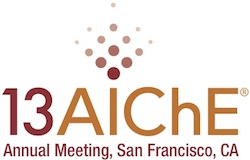

Production of biofuels from lignocellulosic biomass is one of the leading candidates for replacement of fossil fuels. In the biochemical conversion platform , dilute sulfuric acid pretreatment is one of the leading technologies to hydrolyze hemicellulose , relocate lignin and expose cellulose. After pretreatment , a cocktail of cellulase enzymes is used to break down cellulose synergistically. The major problems associated with this technology are the slow and incomplete hydrolysis of cellulose and the degradation of monomer sugars during pretreatment. Furthermore , the cost of the enzymes has been an inhibitory factor for the commercialization of biomass conversion technology. Here , a novel catalytic membrane reactor is designed to simultaneously hydrolyze cellulose and hemicellulose and separate the hydrolyzed sugars , thus minimizing product degradation. A polymeric solid acid catalyst is synthesized to replace the corrosive sulfuric acid and expensive enzymes , but operates at a higher conversion rate than the analogous natural enzymes and that costs far less to produce. We have grown adjacent nanostructure consisting of tethered polysulfonic acid and polyionic liquid chains from the surface of ceramic membranes. The feed consisting of cellulose and hemicellulose in a water / ionic liquid mixture is introduced on one side of the membrane. The polyionic liquid chains help solubilize the polysaccharides while the polysulfonic acid chains catalyze the hydrolysis of the polysaccharides. The membrane pore size is such that only water containing dissolved monomeric sugars and short chain oligomers can pass through. The ionic liquid and larger polysaccharides are rejected. From preliminary hydrolysis experiments , our results indicate the potential of these novel membranes to hydrolyze polysaccharides , minimize degradation product and save on catalyst costs.
